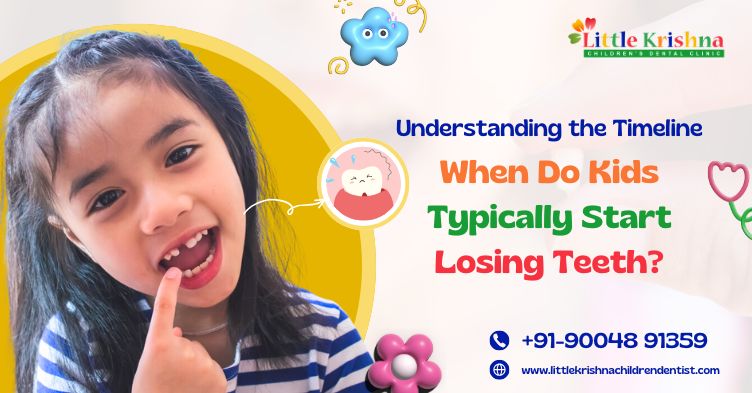Understanding the Timeline: When Do Kids Typically Start Losing Teeth?
Witnessing your child's first loose tooth can be an exciting yet emotional milestone for a parent. The stage of losing milk teeth and welcoming permanent ones marks a significant stage in your child's growth and development. Understanding why baby teeth fall out and how to manage this transition confidently is crucial to ensuring a smooth experience for parents and children.
The Science Behind Tooth Loss
Baby teeth, or primary teeth, are significant in a child's oral development. They help with chewing and speech development and act as placeholders for permanent teeth. Typically, children have 20 baby teeth that start falling out around age 5 or 6. However, some may begin too soon or get delayed depending on various factors such as genetics and oral hygiene practices.
Baby teeth fall out primarily to make way for permanent teeth. Beneath the gums, adult teeth gradually develop and push against the roots of baby teeth, causing them to loosen and eventually fall out. This natural process, known as exfoliation, usually follows a sequence:
Central incisors (ages 6-7): The bottom front teeth are generally the first to go, followed by the top front teeth.
Lateral incisors (ages 7-8): The teeth adjacent to the central incisors fall out next.
First molars (ages 9-11): The larger teeth at the back of the mouth are next in line.
Canines and second molars (ages 10-12): The last set of baby teeth to fall out, preparing the mouth for adult teeth.
Most children have a full set of permanent teeth by the age of 12 or 13, except for wisdom teeth, which typically emerge in late adolescence or early adulthood.
Managing the Process with Confidence
Losing teeth can be both exciting and daunting for children. Encouraging patience and providing reassurance is key to making the experience positive. Parents can help their children by explaining the natural process and ensuring they maintain good oral hygiene to prevent infections or complications.
Here are a few ways to manage tooth loss with confidence:
Encouraging Patience: Remind your child that it's a gradual process. It's okay to wiggle a loose tooth gently, but they should avoid forcefully pulling it out.
Maintaining Oral Hygiene: Encourage brushing twice daily with fluoride toothpaste and regular flossing to keep gums healthy and support new tooth growth.
Monitoring Tooth Loss: Keep track of which teeth have fallen out and what's coming next. If a baby tooth doesn't fall out even after the permanent tooth starts emerging, consider consulting a pediatric dental clinic in Mumbai for professional advice.
Fun Ways to Track Progress
Making tooth loss an enjoyable experience can help ease any anxiety your child might have. Consider these fun ways to track their progress:
Prepare Tooth Loss Charts: Create a fun chart with stickers or drawings to mark each lost tooth.
Tooth Fairy Traditions: When a tooth falls out, the tooth fairy reinforces excitement by leaving small gifts or notes under their pillow.
Storytelling: Share stories about how everyone experiences this stage and how exciting it is to get a new grown-up smile.
Understanding the timeline of losing baby teeth helps parents support their child through this important developmental phase. Each stage brings new opportunities to teach kids about good oral health and the importance of visiting a trusted pediatric dental clinic in Mumbai from the first wiggly tooth to the last. If you have concerns about your child's tooth loss timeline, seeking professional guidance can provide reassurance and ensure their dental health remains on track.
At Little Krishna Children's Dental Care, we are dedicated to making your child's dental journey smooth, comfortable, and exciting. Book an appointment today, and let us help your child embrace their growing smile with confidence!

